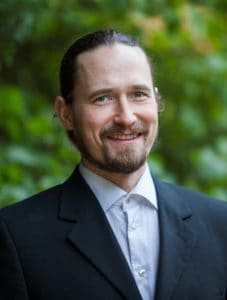By September next year, Finland’s largest nuclear reactor, Olkiluoto 3, should be up and running. Just about time too. The reactor, constructed by a consortium led by state-owned French nuclear group Areva, was supposed to have begun operating in 2009, a full decade before its actual launch in 2019.
The repeated delays have come with ever-rising costs and the project got bogged down in court over a financial dispute. The plant’s owner Teollisuuden Voima (TVO) was seeking compensations from the international consortium, which itself wanted compensation in return on to be divided between Areva, which has a 73% stake in the consortium, and Siemens, which has 27%. A settlement worth billions of euros was reached earlier this year.
The seemingly endless delays over the launch of Olkiluoto 3, which is soon to become the Nordic nation’s fifth and largest reactor on top of the current four situated on the shores of the Baltic Sea, have led to a ratcheting up of costs from the initial €3.2 billion estimate to upwards of €8.5 billion. According to the World Nuclear Association 2008, “each year of additional delay in the construction of a nuclear power plant adds another estimated $1 billion to the cost.” No chump change, that.

The skyrocketing costs and persistent delays have led to calls by some policymakers to scale back Finland’s nuclear ambition. Rauli Partanen, a Finnish energy analyst and author, doesn’t share those views. “I think the most important lesson isn’t that we should stop building nuclear, as that way we may lose existing supply chains, our skilled workforce and project management, and experienced regulators. And these would be very hard and expensive to rebuild,” Partanen tells Sustainability Times.
“If we are to mitigate climate change in a meaningful way, we should not stop building new reactors,” the Finnish expert elucidates. “We should continue to build (modern, well-designed) reactors. Even with the catastrophically delayed Olkiluoto 3 project, nuclear reactors still make for a faster way to create new per capita clean power capacity than (opting to do) like Germany, which continues investing only in wind and solar energy projects.”
He adds: “We could say that if building nuclear is too slow, building renewables is even slower. Obviously we need to make both faster, and especially we need to make sure that one is not replacing the other, but rather both are replacing fossil fuels.”
Despite the troubles with its latest reactor project, Finland remains a nuclear energy powerhouse in Europe. Plans are underway for the country’s sixth and seventh commercial reactors, to be constructed in a joint venture between a subsidiary of the Russian energy company Rosatom and a consortium of Finnish industrial companies. The 1.2GW Hanhikivi 1 reactor, which is overseen by the Fennovoima consortium (a third of which is owned by a Rosatom unit), is expected to be commissioned in 2024.
“Hanhikivi is also a bit behind schedule to apply for a construction permit, which is quite natural as they changed the reactor type at the last moment and so had to start from scratch,” Partanen explains. “As for the primary reasons behind the delays with Olkiluoto 3, the reactor was only half designed when they started construction. Rosatom’s VVER1200 has already been built elsewhere, although with slightly different configuration.”
In addition, “there were no supply chains and an experienced project management team available at the outset because it was the first new reactor in Europe in 20-plus years so all the expertise and supply chains, and regulator experience on nuclear construction had disappeared,” he adds. “A program of building nuclear should build the same design repeatedly and with preferably the same people and same supply chains involved (because the required experience and expertise are already in place)”.

The most important lesson that can be drawn from the causes of these delays, Partanen says, is that reactor designs and project plans must be firmly in place before construction on a new nuclear power plant starts. Notwithstanding setbacks, Finland’s quest to expand its current nuclear feat is widely seen as a logical step by industry analysts. The Nordic country is beset by long and frigid winters so it is hardly suited for much solar energy, while hydroelectric power can hardly meet the country’s considerable energy needs.
Latest-generation nuclear reactors, therefore, are an obvious alternative of clean and reliable energy, not least because the country boasts a long and successful track record with nuclear power. Its current four reactors, which produce a 2,700 MWe net total, are among the world’s most efficient with an average lifetime capacity factor of over 85% and average capacity factor over the last 10 years of 95%, according to the World Nuclear Association.
“Finnish reactors are remarkable in the extent to which they have been uprated since they were built,” the nuclear body explains. “TVO’s Olkiluoto 1&2 started up in 1978-80 at 660 MWe net (690 MWe gross); 30 years later, they were rated at 880 MWe net each (one-third more) and their lifetime had been extended to 60 years, subject to safety evaluation every decade.” TVO seeks to better even those rates while ensuring “40 years of remaining technical lifetime.”
Finland’s electricity production is around 69TWh (gross), of which nuclear accounts for 23TWh, hydro 17TWh, coal and gas 15TWh, biofuels 12TWh. Finland has a per capita annual electricity consumption of around 13,500kWh, and much of the electricity consumed in the country comes from imports, particularly from Russia. In order to wean Finland off its relatively heavy reliance on imported coal, the Nordic nation wants to replace coal use by 2030 — largely by commissioning two nuclear power reactors.
Yet several other countries in Europe that are in similar situation are loath to embrace the Finnish example, mostly for ideological reasons. Policymakers in Germany and Austria have especially been dead-set against nuclear energy, largely as a result of lingering fears about the destructive potential of nuclear power fueled in part by some local activist groups’ decades-long anti-nuclear campaigns.
“Germany and Austria are deeply antinuclear on almost all levels of society, and it doesn’t help that local political classes harbor the same mistrust about nuclear, claiming it’s dangerous even though it is in fact our safest energy source,” Partanen tells Sustainability Times.

“There is a lot of cognitive dissonance to overcome. I am worried because, based on my experience in talking with Germans, many of them are starting to even doubt climate change and so ignore the need to urgently decarbonize. Yet it is becoming clear that their Energiewende (“energy transition”) is failing to address the problems effectively. Therefore, I think it will take a lot of time and effort for their views on nuclear energy to change.”
Yet changing such anti-nuclear views is essential if we are to kick our harmful habit of relying on fossil fuels in order to power our economies. Many industry experts think that renewable sources like solar and wind will simply be incapable of meeting industrialized nations’ energy needs.
So the choice will have to be between coal-fired plants and nuclear reactors.
“If we want to decarbonize our economies, if we want to bring safe, clean and competitive energy to everybody, we’ll need to … substitute fossil energy sources with clean ones,” Xavier Ursat, senior executive vice-president of France’s EDF Group, explained at the World Nuclear Exhibition held in Paris in late June. “If we want to face this task, we have two natural solutions.”
One solution, he noted, lies in renewables. However, renewable energy sources are dependent on the vagaries and variables of weather in different countries. The sun may not shine enough for solar energy to remain a constant source, winds may blow too haphazardly for wind power to operate dependably all year round. “So the other solution,” Ursat said, “is nuclear.”
Did you like it? 4.5/5 (22)








